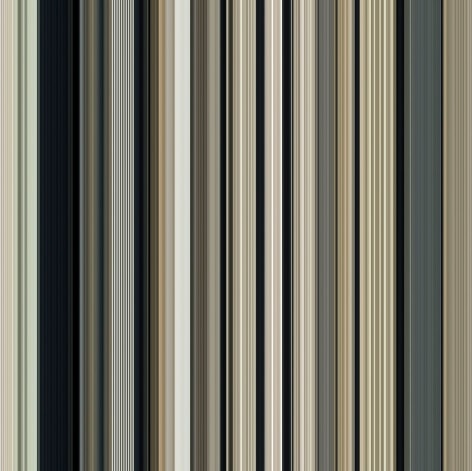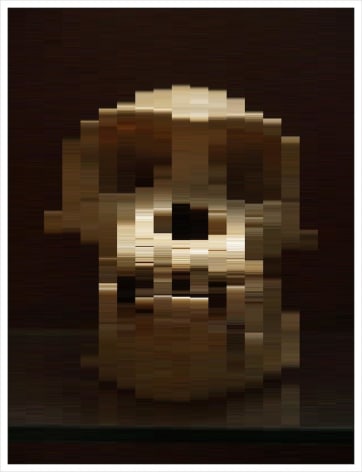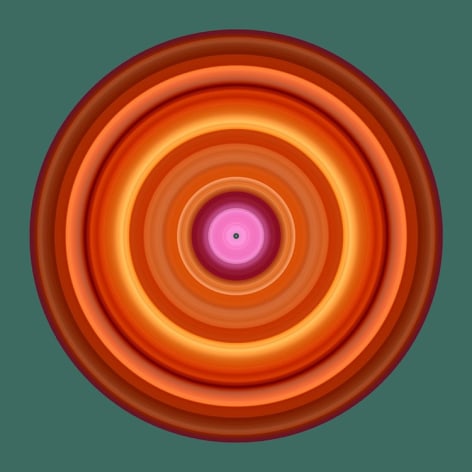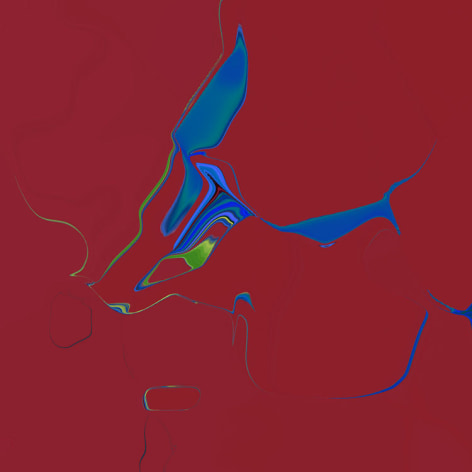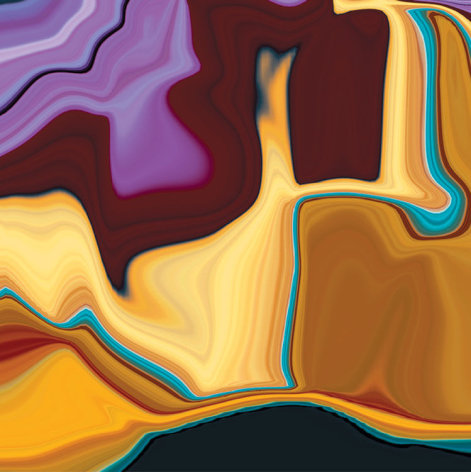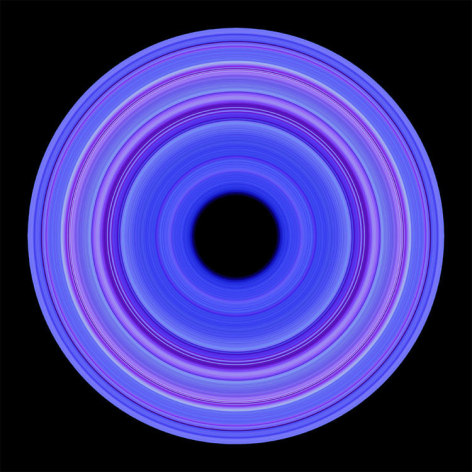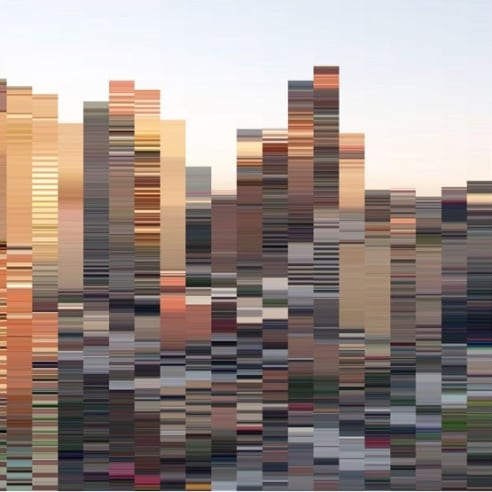
Symbology
The new work presented at Kathleen Cullen Fine Art is the continuation of the “Histograms and Variations” explorations begun in 2001.
“Histograms” is a term I appropriated for works created by extracting and abstracting minute details from specific photographs. The latest work incorporates a similar method, however the resulting image reflects basic elements from the source image, allowing representation to occur. The subjects rendered are of portraits and the urban landscape. The subjects explored refer to man’s relationship to himself, to his history and his surroundings in the age of technology.
In our increasingly technological world, connections to information and our perceived reality are often made through various types of electronic visual screens: Computers, televisions, projectors, PDAs, mobile phones and the like. We now live with the ability to be intimately involved in the lives of people whom we have and may never physically meet, in environments and constructs that are entirely digital. This is a precarious and revolutionary step in the evolution of man. We are all bound to exist in this amorphous state, as technology becomes a necessity and integral part of our lives.
I am interested in the visual element of this interaction.
The human brain has the ability to recognize and differentiate minute details in another’s face within a fraction of a second. People we have only seen in the media are immediately recognized on the street as if they had been neighbors. This phenomenon has elevated fame and notoriety to the significant and celebrated part of contemporary culture.
In order to explore these phenomenons in my work, I created a visual filter – a sort of digital kaleidoscope – through which only basic elements of representation remain visible. I chose a linear graphic reminiscent of the commonplace bar code as inspiration for this filter. Representing one of the first widely and commercially used man made systems that can only be read by a machine, further distancing us from our surroundings, each other and ultimately ourselves. This mapping between messages and barcodes is referred to as “Symbology”. It is a way to establish conceptual connections between behavioral psychology and mathematics
This existential ambiguity informs my new work, simultaneously representational and abstract.
New York, March 21, 2008

